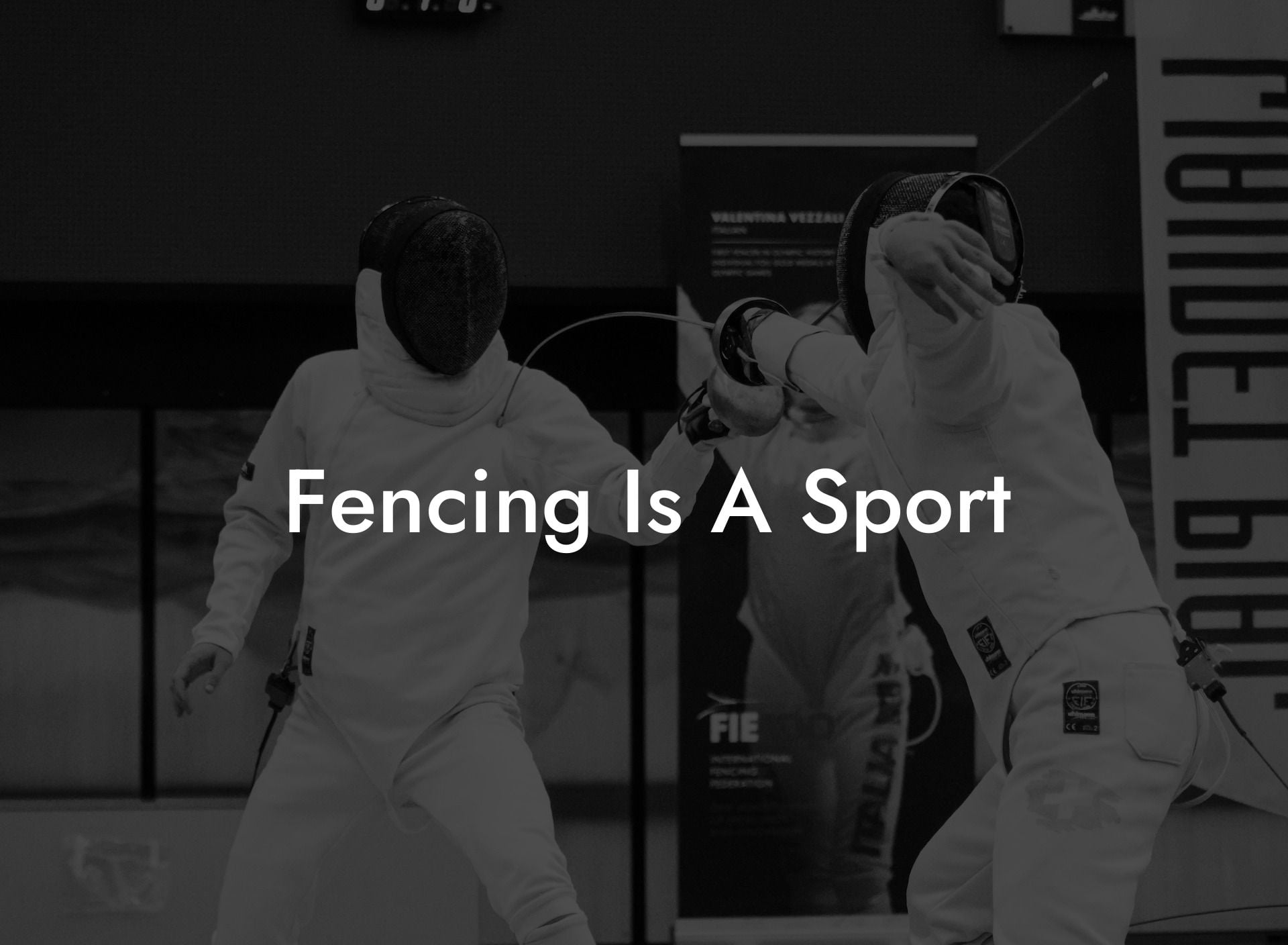Discover the world of fencing, an elegant and strategic sport that has captured the imagination of many for centuries. In this article, we explore what makes fencing such a unique and captivating sport, delving into its rich history, various styles, and the essential equipment needed to participate.
Fencing Is A Sport Table of Contents
A Brief History of Fencing
Fencing originated in ancient civilizations such as Egypt and Greece, where swordplay was a crucial skill for warriors and nobility. Fast forward to the Renaissance period in Europe, and fencing became a popular sport among the aristocracy. Today, fencing is enjoyed by people from all walks of life worldwide and has even evolved into a competitive Olympic sport.
Three Styles of Fencing
There are three main styles of fencing, each with its unique weapon and set of rules. These styles are:
- Foil: A lightweight weapon with a flexible, rectangular blade. Points are scored by hitting the opponent's torso with the tip of the blade. Foil fencing emphasizes precision and strategy.
- Epee: A heavier weapon with a stiffer, triangular blade. Points can be scored anywhere on the opponent's body and are awarded for the fencer who lands a hit first. Epee fencing requires patience and timing.
- Sabre: A weapon with a slightly curved, flexible blade. Points can be scored with both the edge and tip of the blade, allowing for slashing and thrusting attacks. Sabre fencing is fast-paced and aggressive.
Essential Fencing Equipment
Regardless of the style of fencing, all fencers must wear protective gear to ensure their safety during bouts. The essential pieces of fencing equipment include:
- Mask: A sturdy, steel mesh mask that protects the face and head from blade strikes.
- Jacket: A thick, padded jacket that covers the torso and arms. It often features special reinforcements for added protection in areas prone to impact.
- Gloves: Specialized gloves that provide grip and protection, extending beyond the wrist to cover a portion of the forearm.
- Breeches/Knickers: Knee-length pants that provide mobility and protection for the lower body.
- Socks and Shoes: Long socks that cover the lower leg and fencing-specific shoes with non-slip soles for stability and agility on the strip.
Physical and Mental Benefits of Fencing
Fencing is not only an exciting and unique sport but also offers numerous physical and mental benefits. Some of these benefits include:
- Improved cardiovascular fitness and endurance
- Increased strength and flexibility
- Enhanced agility, balance, and coordination
- Sharpened focus and concentration
- Stress relief and emotional well-being
- Development of self-discipline and perseverance
Fencing Is A Sport Example:
Imagine stepping onto the fencing strip, your opponent positioned at the opposite end. The referee signals the start of the bout, and you both advance, blades extended. In a flurry of movement, you and your opponent exchange strikes, feints, and parries. As the clock winds down, you score the final touch to win the match – a thrilling display of skill, strategy, and athleticism.
Now that you have a better understanding of fencing as a sport, you might find yourself inspired to give it a try. Whether you're a seasoned athlete or a newcomer to the world of sports, fencing offers a unique and exhilarating experience for all to enjoy. Be sure to check out other guides on Anchorage Fencing Club to learn more about this fascinating sport and the best fencing equipment. Feel free to share this article with friends and family members who might also be interested in discovering the excitement and benefits of fencing.













